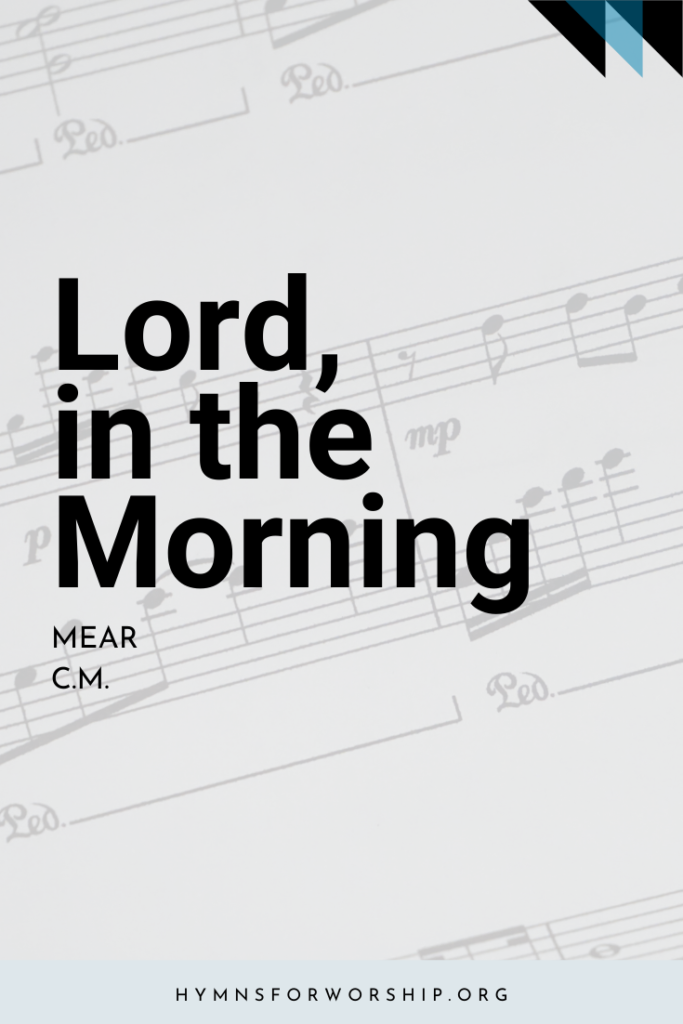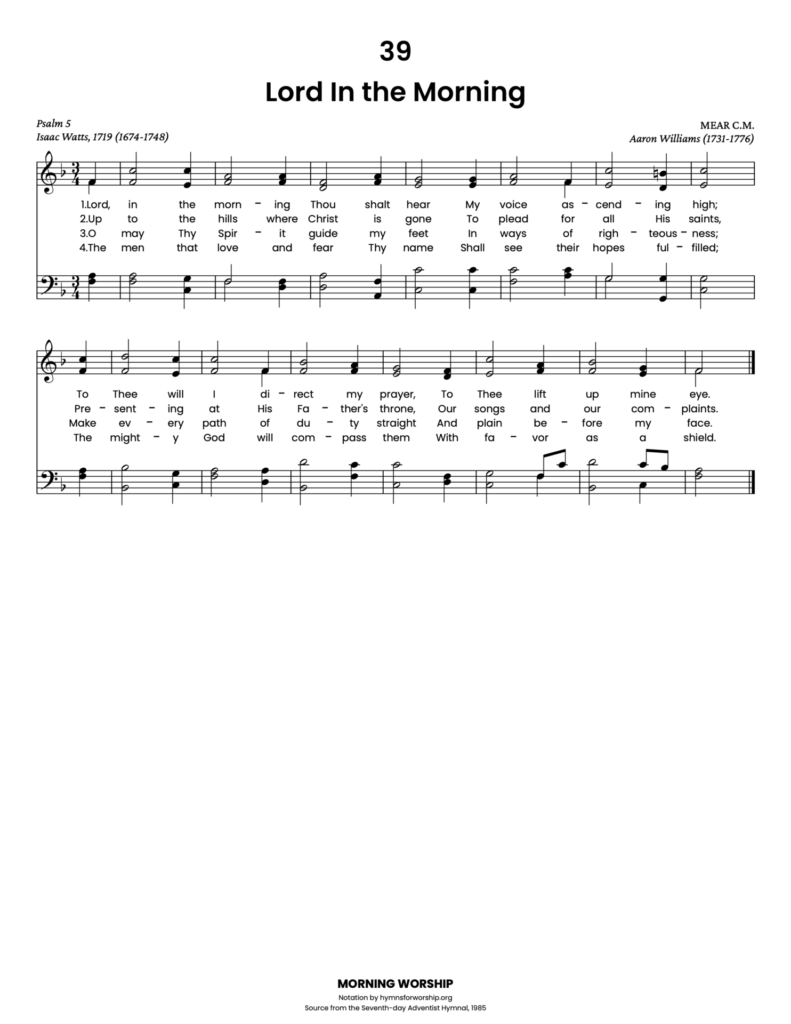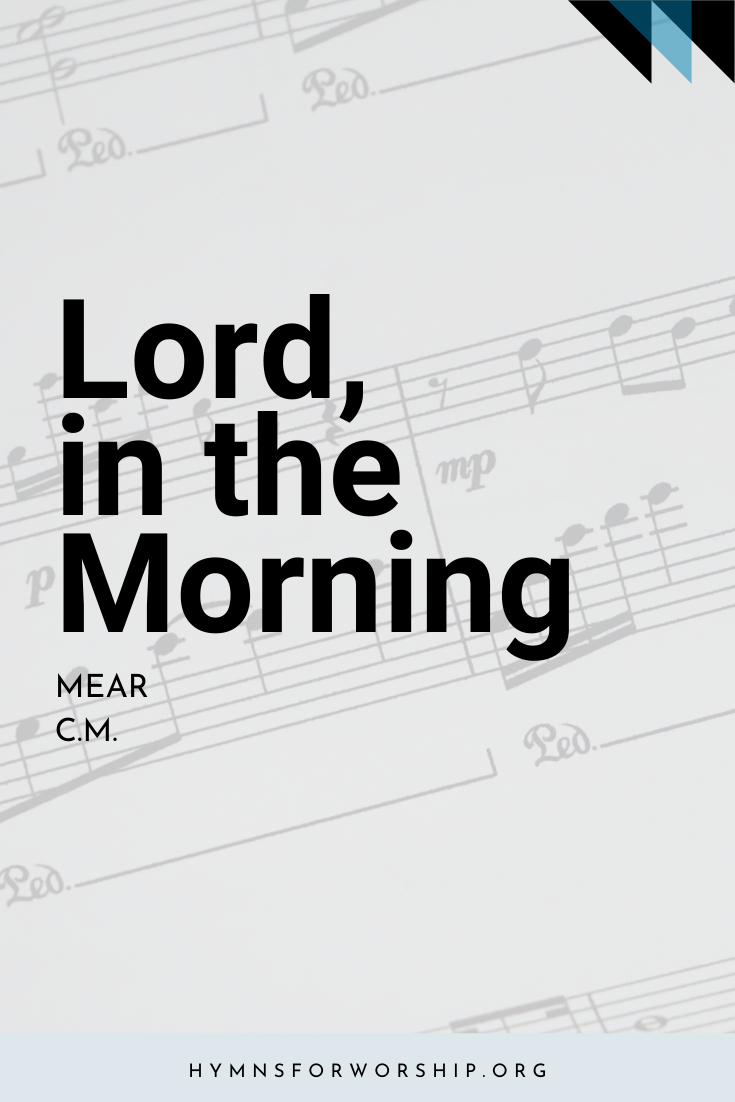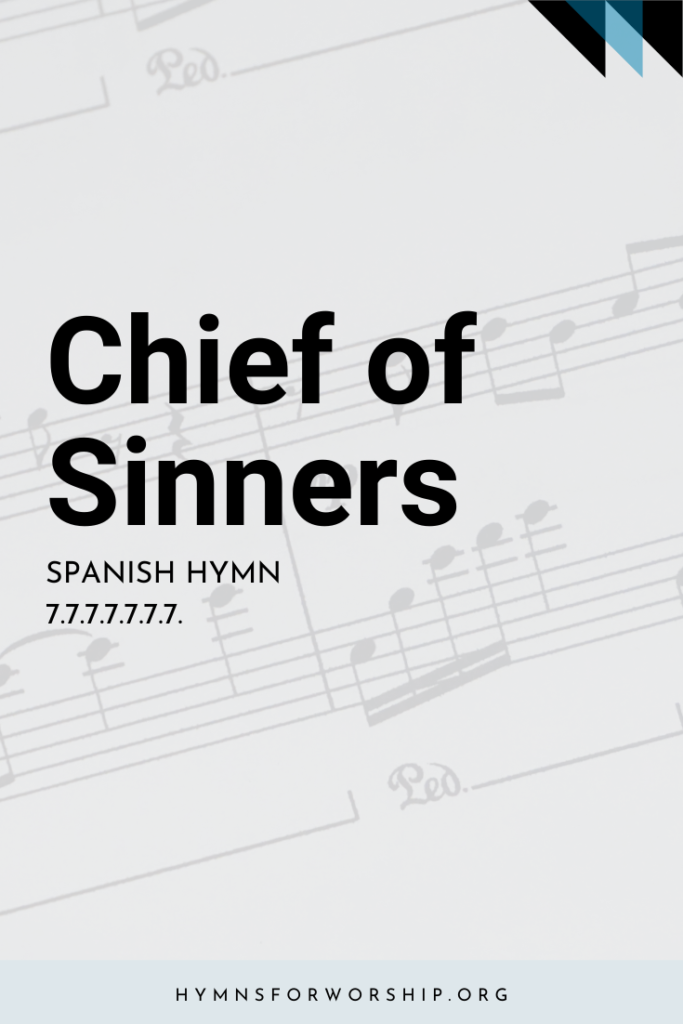WORSHIP >> Morning WORSHIP
SDAH 39
Lord, in the morning Thou shalt hear
My voice ascending high;
To Thee will I direct my prayer,
To Thee lift up mine eye.


Text
1
Lord, in the morning Thou shalt hear
My voice ascending high;
To Thee will I direct my prayer,
To Thee lift up mine eye.
2
Up to the hills where Christ is gone
To plead for all His saints,
Presenting at His Father’s throne
Our songs and our complaints.
3
O may Thy Spirit guide my feet
In ways of righteousness;
Make every path of duty straight
And plain before my face.
4
The men that love and fear Thy name
Shall see their hopes fulfilled;
The mighty God will compass them
With favor as a shield.

Hymn Info
Biblical Reference
Psalm 5
Author
Isaac Watts (1674-1748)
Year Published
1719
Hymn Tune
MEAR
Metrical Number
C.M.
Composer
Aaron Williams (1731-1776)
Theme
MORNING WORSHIP

Get the hymn sheet in other keys here
Notes
Get to know the hymns a little deeper with the SDA Hymnal Companion. Use our song leader’s notes to engage your congregation in singing with understanding. Even better, involve kids in learning this hymn with our homeschooling materials.
This paraphrase of Psalm 5 by Isaac Watts (1674-1748; see Biographies) appeared in his Psalm of David, 1719. There are eight stanzas in the original hymn. Watts added the following note after his hymn: “This psalm begins with the mention of morning prayer, and proceeds to the worship of God in His temple, which inclined me to entitle it “For Lord’s Day Morning.”
Regarding SDAH stanzas 2 and 3, Watts commented, “Where any just occasion is given to make mention of Christ and the Holy Spirit, I refuse it not; and I am persuaded David would not have refused it, had he lived under the gospel, nor St. Paul, had he written a Psalm-Book.” This illustrates the principle Watts had in mind in the full title he gave his book, The Psalms of David Imitated in the Language of the New Testament, and Adapted to the Christian State and Worship.
Comparison of the hymn with the psalm will show that stanza 1 and 2 in the SDAH correspond with the first three verses of the psalm, stanza 3 with verse 8, and stanza 4 with verses 11 and 12.
The tune MEAR is probably by the music engraver Aaron Williams (1731-1776), of Welsh descent, a member of the Scots Church in London, and editor of Williams’ Psalmody, 1770. MEAR appears in an early New England collection of hymn tunes appended to a copy of an edition of an edition of Tate and Brady’s New Version, published in Boston in 1757. It is certainly a shortened version of the tune HOLBORN, which first appeared in 1763 in Williams’ The Universal Psalmist. Another Watts-Wiliams’ combination is SDAH (372), “How Beauteous Are Their Feet.” to the tune ST. THOMAS.






